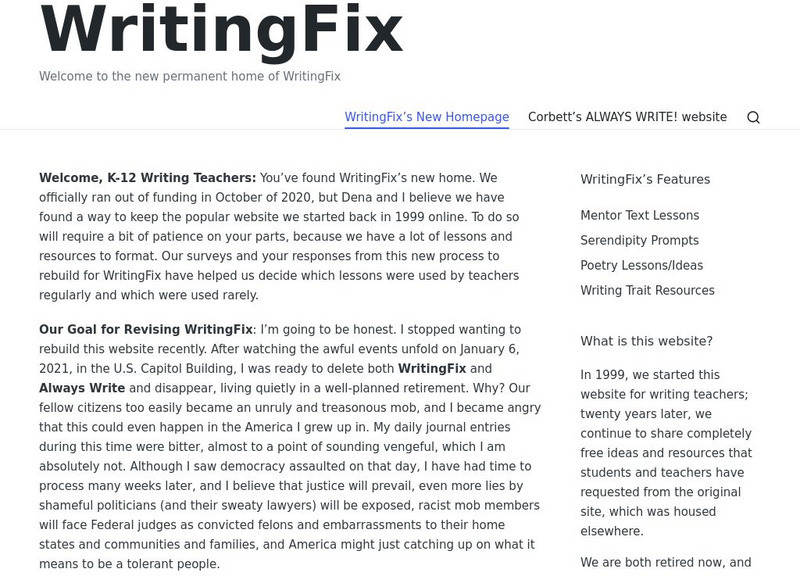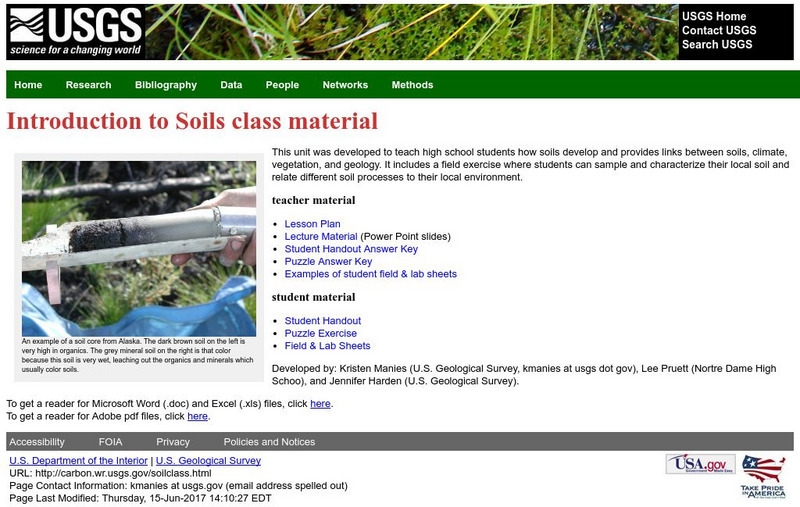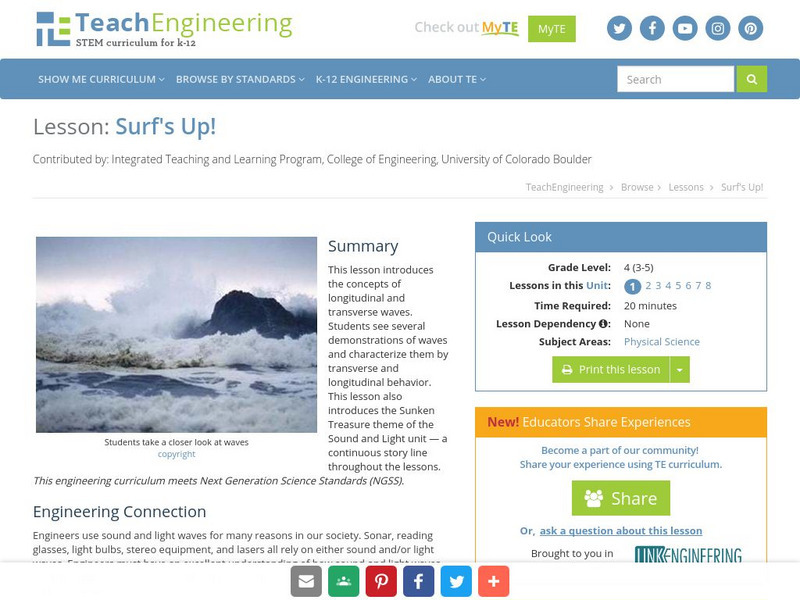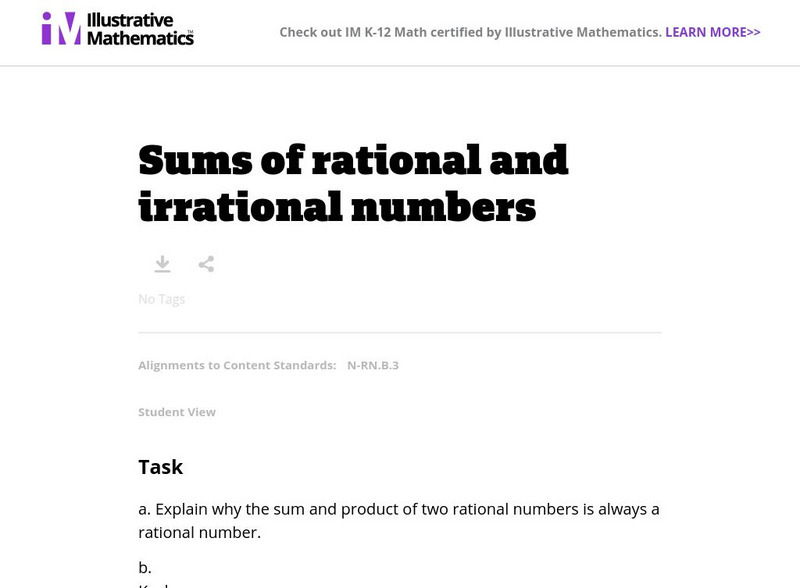Hi, what do you want to do?
Writing Fix
Writing Fix: Actions Speak Louder Than Words
After hearing and discussing an excerpt from Sharon Creech's Walk Two Moons, students will plan to create a unique description of a character that uses memorable actions that "show" a person's character. They will brainstorm verbs that...
ReadWriteThink
Read Write Think: Lights, Camera, Action: Interviewing a Book Character
Students get the inside scoop on a story when they create interview questions and answers for characters in the books they read.
Read Works
Read Works: Character 3rd Grade Unit
[Free Registration/Login Required] In this three-lesson unit, students learn how to identify language within a text that describes a character, use evidence from a text to describe a character, and to use details from a text to identify...
Read Works
Read Works: Grade 2: Three Lesson Unit: Character
[Free Registration/Login Required] A series of three lesson plans designed to teach students to recognize a character's personality traits, predict a character's actions, and describe a character using rich language. Lessons are based on...
Florida Center for Reading Research
Florida Center for Reading Research: Character Connections
A lesson plan in which students read a narrative text and complete graphic organizers to describe a character or compare and contrast two characters from the story. Materials are included. [PDF]
Florida Center for Reading Research
Florida Center for Reading Research: Compare a Character [Pdf]
A lesson plan in which students read a narrative text and complete graphic organizers to compare and contrast two characters from the story. Materials are included.[PDF]
Florida Center for Reading Research
Florida Center for Reading Research: Character Consideration
A lesson plan in which students read a narrative text and complete graphic organizers to analyze a character. Materials are included. [PDF]
Florida Center for Reading Research
Florida Center for Reading Research: Character Characteristics
A lesson plan in which students read a narrative text and complete graphic organizers to analyze a character. Materials are included. [PDF]
Alabama Learning Exchange
Alex: Character Expression Using the Three Little Pigs
Students will use the character lineup strategy in collaborative groups to retell the story of the Three Little Pigs. Each group will be assigned a different character or emotion and then compare the differences between each group....
ReadWriteThink
Read Write Think: Using Online Technology to Explore Characterization and Style
Students use social networking sites to trace the development of characters by assuming the persona of a character on the class Ning and sending a set number of tweets, or status updates.
Stanford University
Sheg: Document Based History: Reading Like a Historian: The Gilded Age
[Free Registration/Login Required] Students read primary source documents to solve a problem surrounding historical questions. The Gilded Age unit highlights the turbulent changes that characterized the end of the nineteenth century.
TeachEngineering
Teach Engineering: Hidden in Plain Sight
Steganography is the science and art of hiding messages in plain sight so only the sender and intended recipient know the existence of a message. Steganography can be characterized as security through obscurity. Through this lesson,...
US Geological Survey
U.s. Geological Survey: Introduction to Soils
This unit teaches students how soils develop and provides links between soils, climate, vegetation, and geology. It includes a field exercise where students can sample and characterize their local soil and relate different soil processes...
PBS
Pbs Learning Media: Supernatural Elements in Macbeth
In this self-paced instructional activity, young scholars explore how Shakespeare uses supernatural elements in Macbeth. It begins with an exploration of beliefs about the supernatural and witchcraft in Shakespeare's time as presented in...
Children's Museum
The Children's Museum of Indianapolis: Color Changing Milk
Learners observe a molecular dance of bursting colors through exploring states of matter and learning that materials can be characterize by how they respond to water.
Children's Museum
The Children's Museum of Indianapolis: Tie Dye Paper
Students characterize materials by their state of matter and then combined materials to create a piece of colorful, tie dye-esque paper.
Huntington Library
Huntington Library: Shakespeare's Universalism [Pdf]
In this lesson, students explore how Shakespeare was able to write in a way that his characters seemed to express real emotions and will look at the literary devices he used. An extension activity has them analyze what William Hazlitt...
Harry S. Truman Library and Museum
The Trumpet Club: The Birchbark House
Come and check out this informative site featuring the book "Birchbark House," by Louise Erdrich. This site provides a plot summary, discussion of settings and characterizations, and a class project idea.
National Endowment for the Humanities
Neh: Edsit Ement: Faulkner's Sound and the Fury:narrating Compson Family Decline
In this curriculum unit, learners will consider William Faulkner's "The Sound and the Fury": Narrating the Compson Family Decline and the Changing South. Worksheets and other supporting materials can be found under the Resources tab....
American Geosciences Institute
American Geosciences Institute: Earth Science Week: Mystery Mollusc
Learners become marine biologists, and their goal is to characterize the biological communities that live on or near the seamount in the Monterey Bay area. There, they must identify a mystery mollusk.
TeachEngineering
Teach Engineering: Surf's Up!
This lesson introduces the concepts of longitudinal and transverse waves. Students see several demonstrations of waves and characterize them by transverse and longitudinal behavior. This lesson also introduces the Sunken Treasure theme...
Illustrative Mathematics
Illustrative Mathematics: N Rn Sums of Rational and Irrational Numbers
The goal of this task is to examine sums and products of rational and irrational numbers. One important property of rational numbers is that their decimals always terminate or repeat: using a slightly different formulation, a rational...
Illustrative Mathematics
Illustrative Mathematics: G Gpe Defining Parabolas Geometrically
The purpose of this task is to show that the points on a parabola can be characterized by being equidistant from a point (the focus) and a line (the directrix). Aligns with HSG-GPE.A.2.
Illustrative Mathematics
Illustrative Mathematics: F Le Us Population 1790 1860
In this task, students are shown a table of U.S. population data between 1790 and 1860 and are asked to explore whether exponential functions would be appropriate to model relationships within the data. The purpose of the task is to help...
Other popular searches
- Indirect Characterization
- Adjectives Characterization
- Teaching Characterization
- Characterization Worksheets
- Chaucer's Characterization
- Characterization Power Point
- Direct Characterization
- Analyze Characterization
- Characterization Literature
- Characterization Test
- Characterization in Fiction
- Characterization Methods










![Florida Center for Reading Research: Compare a Character [Pdf] Lesson Plan Florida Center for Reading Research: Compare a Character [Pdf] Lesson Plan](https://content.lessonplanet.com/knovation/original/509130-d13671fde24d0633b0181120a31112c3.jpg?1661786928)













